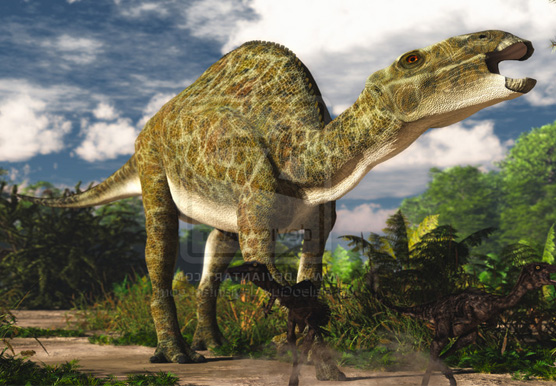Zhangenglong (phonetically spelled Zang-heng-long) is a yangchengensis type species dinosaur named by Xing Hai, Wang Deyou, Han Fenglu, Corwin Sullivan, Ma Qingyu, He Yiming, David Hone, Yan Ronghao, Du Fuming & Xu Xing in 2014. The classification of the species is as follows:
Chordata – Reptilia – Dinosauria – Ornithischia – Ornithopoda – Hadrosauroidea

The size of the Holotype is roughly estimated to be somewhere between 5.5 and 6 meters long. They followed a herbivorous diet. The known location of this species is the Majiacun Formation in the Xixia County of the Henan Province in China. They existed during the Santonian of the Cretaceous era. The fossil representations include partial remains including right maxilla which is the tooth bearing bone of the skull, right jugal and right dentary which is the lower left jaw bone. Post cranial remains including dorsal vertebrae, ribs, shoulder and ulna which is the lower forearm bone have also been attributed to the genus.
Zhanghenglong is named after Zhang Heng, a classical Chinese scholar who died in the second century A.D. The importance of Zhanghenglong is that it was a transitional form between the last iguanodontid ornithopods and the first hadrosaurs, presenting an intriguing mix of these two ornithischian families. The large "iguanodontid ornithopods" i.e., the occasionally bipedal plant-eaters that resembled Iguanodon gradually morphed into the first true hadrosaurs, or duck-billed dinosaurs during the last 40 million years of the Cretaceous period. Zhanghenglong is an extinct genus of herbivorous hadrosauroid iguanodont dinosaur known from the middle Santonian stage of the Late Cretaceous period. It was present in the Majiacun Formation in Xixia County of Henan Province, China. It contains a single species, Zhanghenglong yangchengensis which is represented by a disarticulated, partial cranium and a postcranial skeleton
| Name: | Zhanghenglong (Zhang Heng's dragon). |
| Phonetic: | Zang-heng-long. |
| Fossil representation: | partial remains including right maxilla(tooth bearing bone of the skull),right jugal and right dentary (lower left jaw bone). Post cranial remains including dorsal (back) vertebrae, ribs, shoulder and ulna (lower forearm bone) have also been attributed to the genus. |